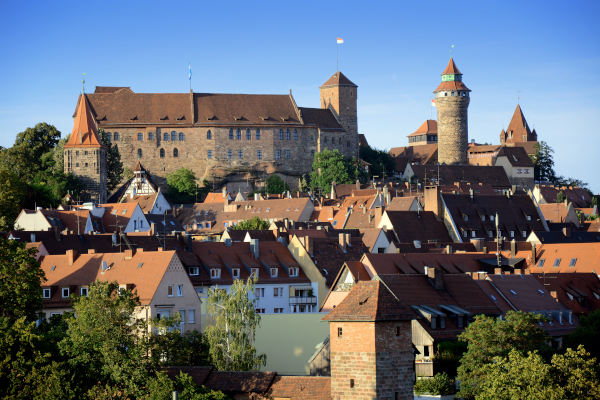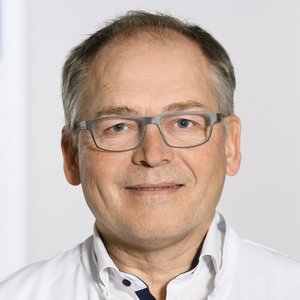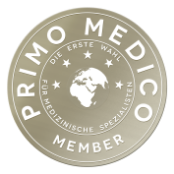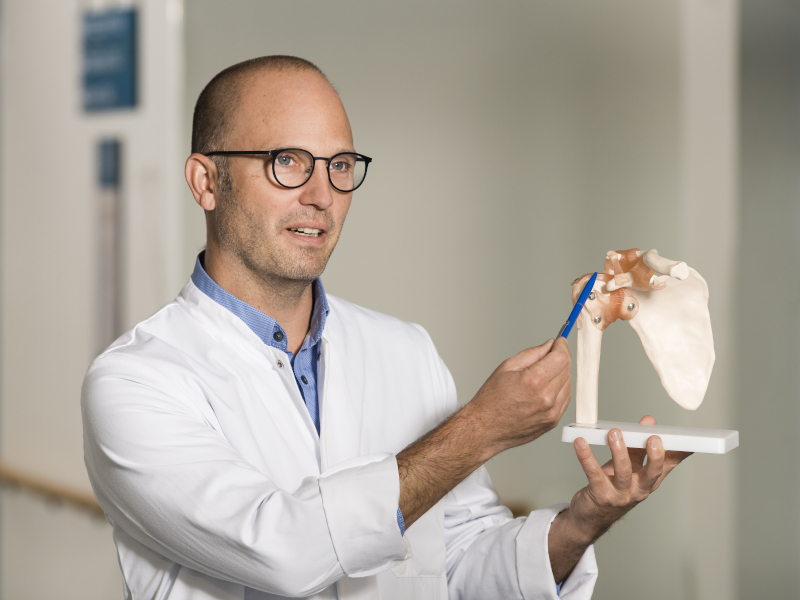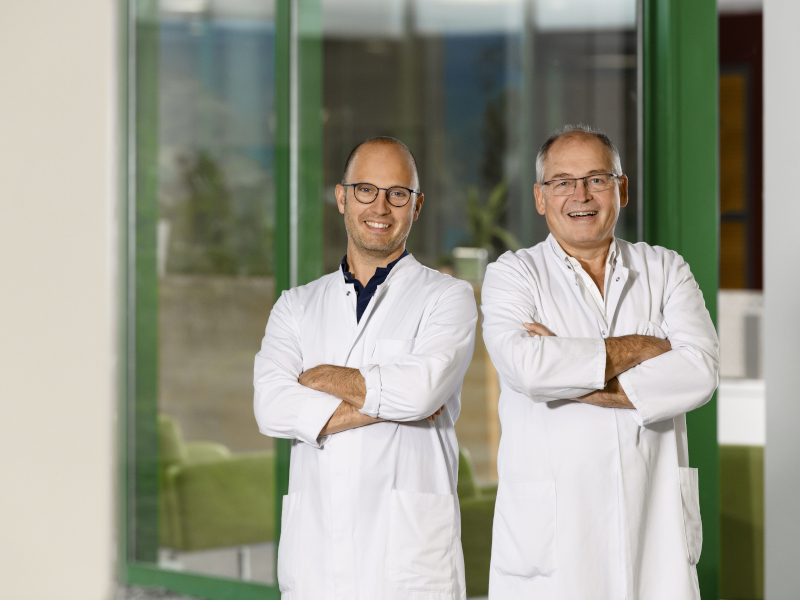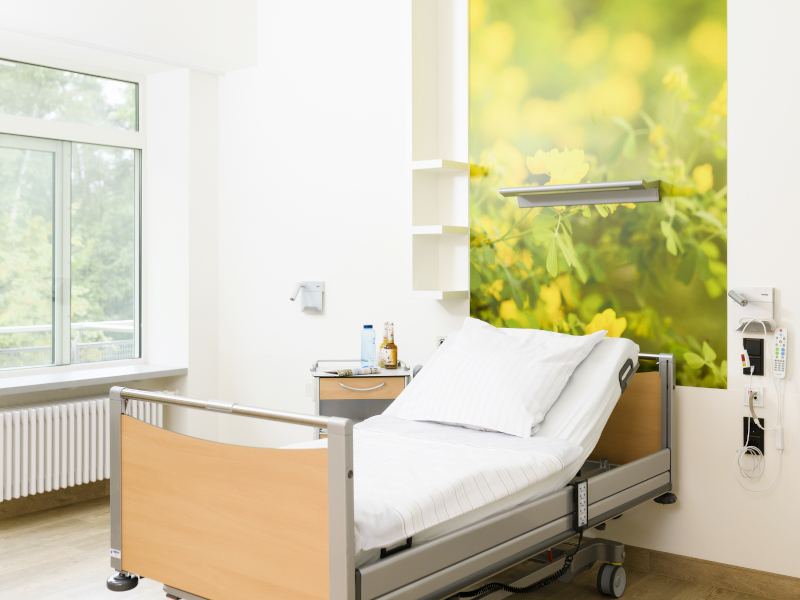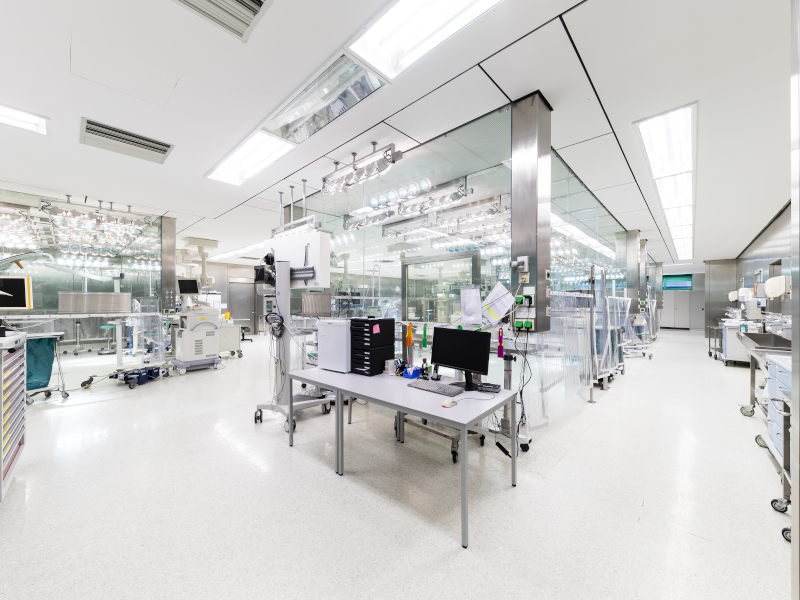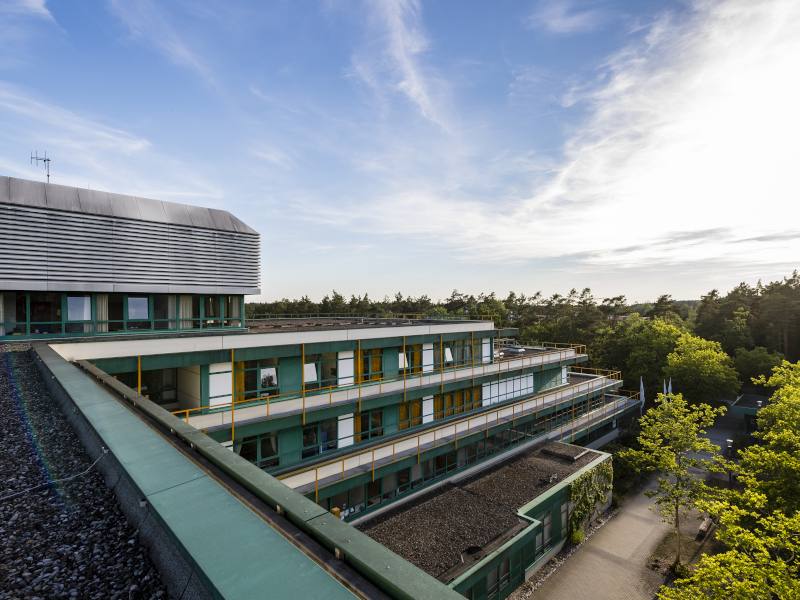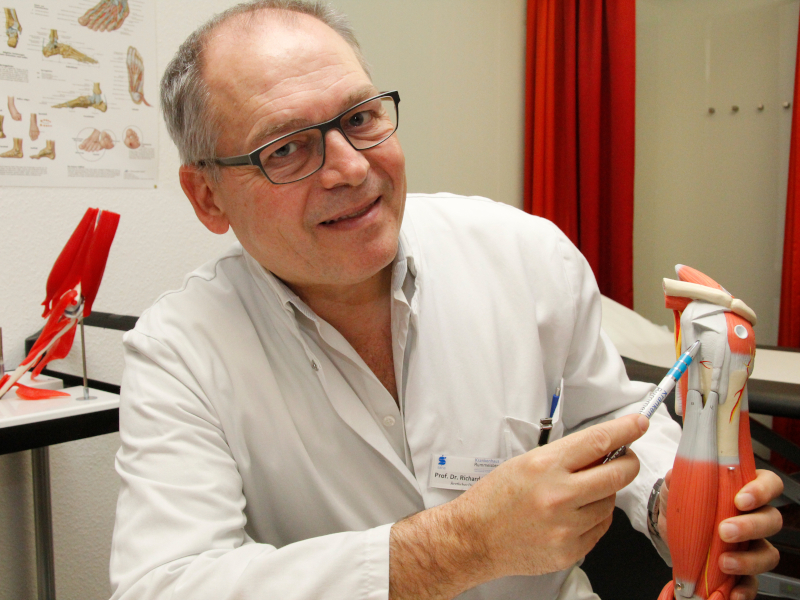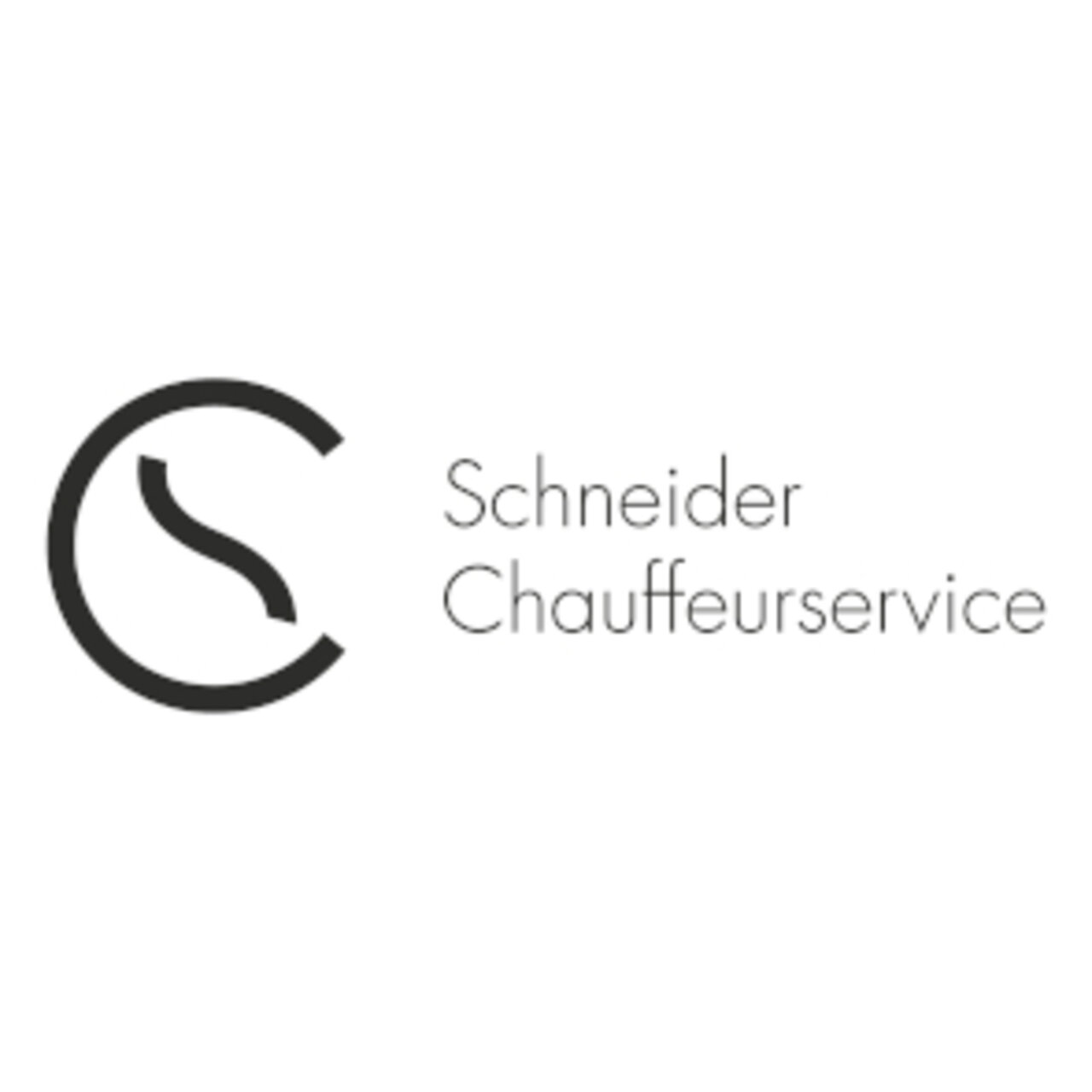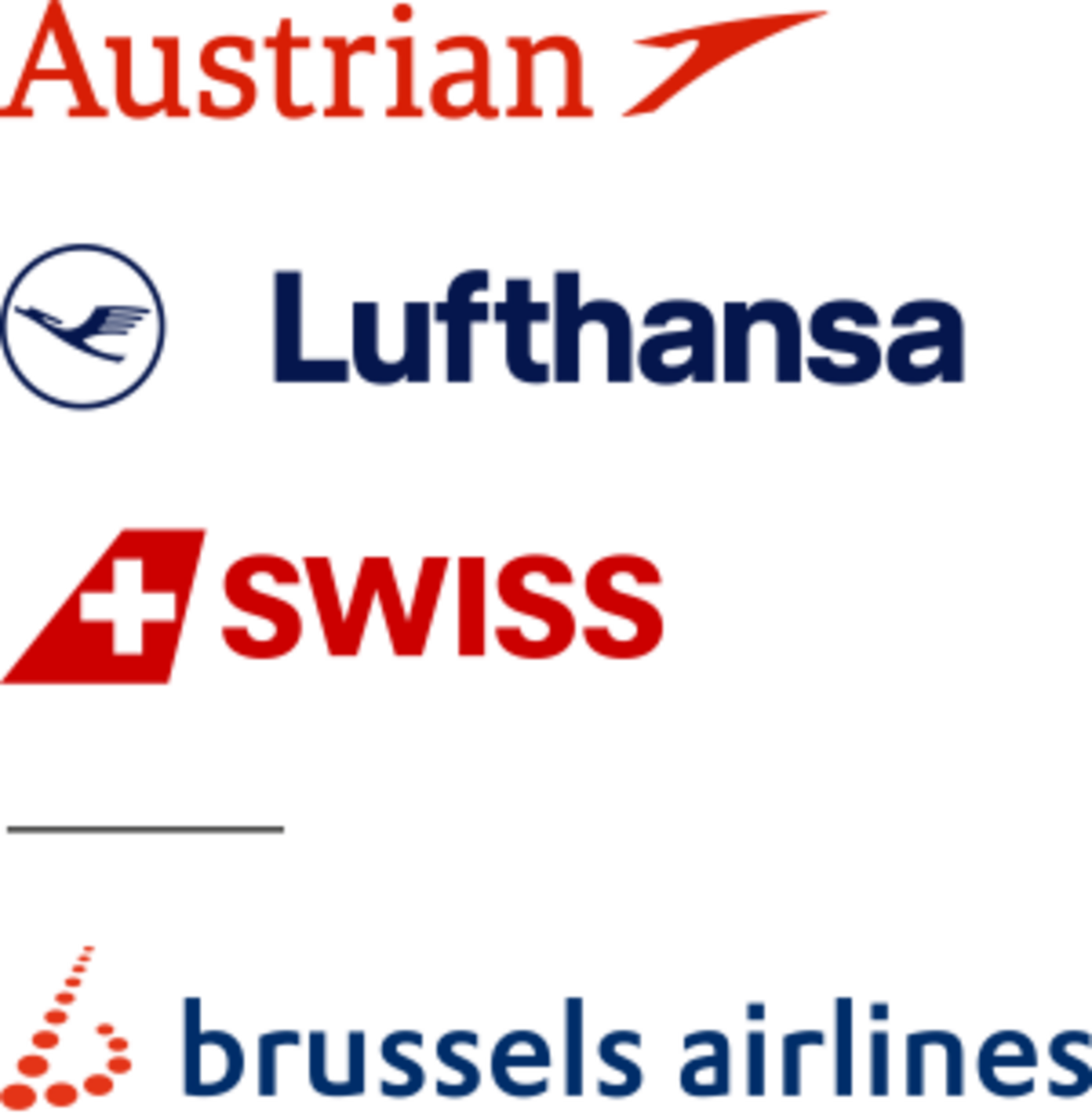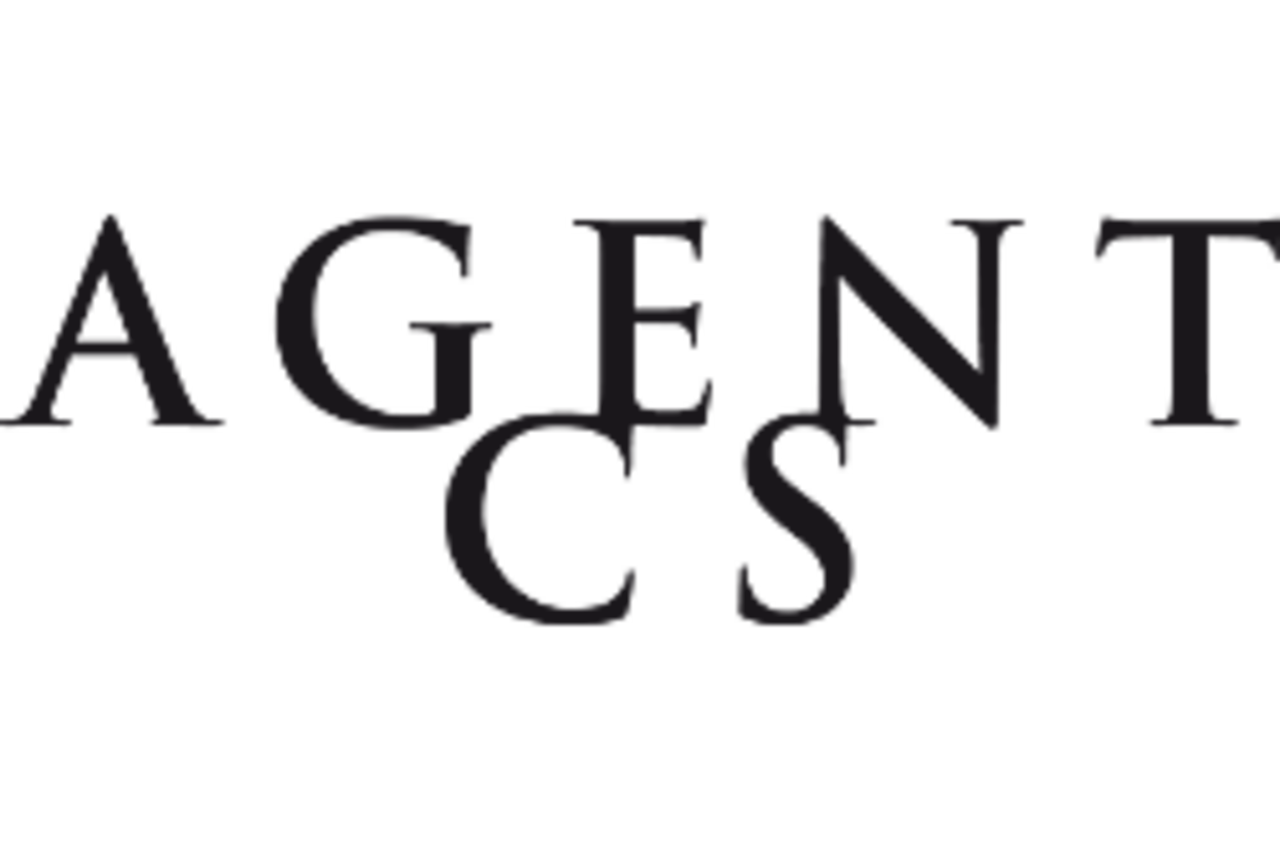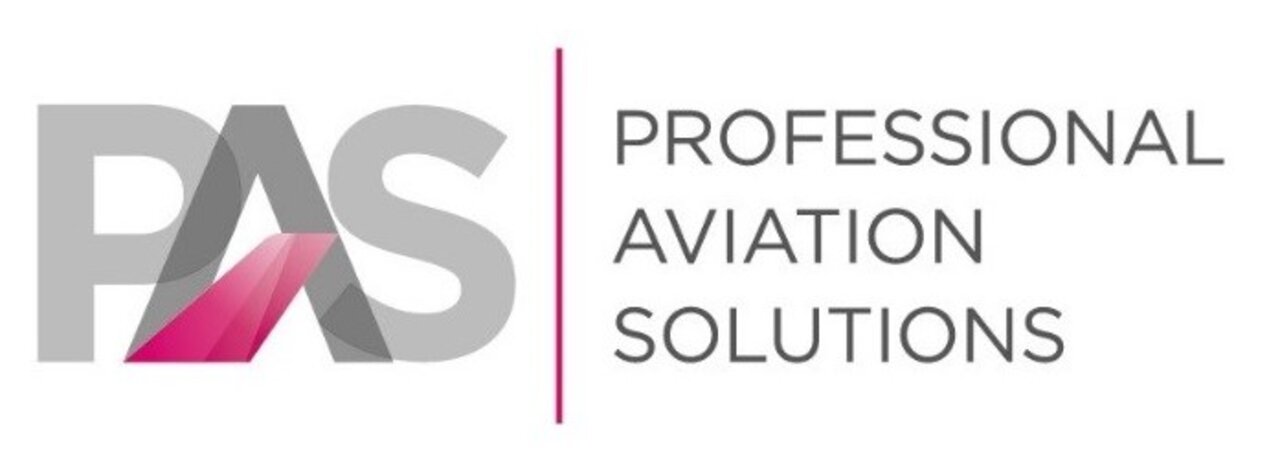Prof. Dr Richard Stangl – Specialist for Shoulder and Elbow Surgery in Bavaria
Treatment focus
- Shoulder diseases and injuries (instability, rotator cuff, AC joint, impingement)
- Injuries and diseases of the biceps tendon and the biceps tendon anchor
- Shoulder prostheses
- Ligament replacement surgery on the elbow joint
- Tennis or golfer’s elbow
- Nerve constriction syndromes (e.g. ulnar nerve)
- Fracture treatment of the shoulder and elbow
Contact
Rummelsberg Hospital
Clinic for Trauma, Shoulder and Restorative Surgery, Sports Medicine and Sports Traumatology
Rummelsberg 71, D-90592 Schwarzenbruck
P: +49 9128 405 40 04 F: +49 9128 504 31 18
Consultation Hours:
Wednesday 11:30 a.m. – 1:00 p.m.
By prior arrangement

Medical Range
Range of Diagnostic Services
- Medical history and physical examination
- X-ray
- Ultrasound
- CT
- MRI
Range of Therapeutic Services
Surgeries of the Shoulder Joint
- Shoulder arthrosis
- Stabilisation of the acromioclavicular joint
- Shoulder dislocation and shoulder instability
- Fracture of upper arm, shoulder blade, clavicle (collarbone)
- Shoulder prostheses
- Infection of shoulder prostheses
- Tumours of the shoulder joint
- Tear of the rotator cuff
- AC joint arthrosis
- Impingement syndrome
- Lesions of the biceps tendon and the biceps tendon anchor
- Clavicle fractures in large comminuted fractures
Elbow Operations
- Elbow dislocations
- Elbow fractures
- Ligament replacement surgery
- Epicondylitis surgery (tennis elbow)
- Nerve constriction syndromes
More Information
Card
Prof. Dr Richard Stangl is Medical Director of the Orthopaedic Trauma Surgery Clinic Rummelsberg and a Specialist in Shoulder Surgery. He is also Chief Physician of the Clinic for Trauma, Shoulder, and Restorative Surgery, Sports Medicine, and Sports Traumatology.
Professor Stangl and his team of doctors diagnose and treat all injuries and diseases of the shoulder girdle and elbow joint as well as their secondary conditions, including restoration in the case of degenerative changes.
Shoulder and elbow surgery at Rummelsberg Hospital is one of the few certified reference clinics for shoulder and elbow.
Shoulder and Elbow Surgery Rummelsberg – Experts for Elbow and Shoulder Surgery in Bavaria
As a proven shoulder expert, Professor Stangl treats the shoulder joint for all injuries and diseases as well as their secondary conditions, including the restoration of degenerative changes such as shoulder arthrosis. Shoulder surgeries can be performed either arthroscopically or openly. Arthroscopic shoulder surgery spares the surrounding tendon of the shoulder and is a low-risk procedure. Professor Stangl performs open shoulder surgery for some disorders that do not allow a minimally invasive procedure. These include certain lesions on the rotator cuff, recurrent special shoulder dislocations, and the insertion of a shoulder prosthesis. The goal of any shoulder surgery is helping the patient to live as pain-free as possible and to regain quality of life without limiting movement.
Shoulder Prosthesis – the Artificial Joint Replacement
Professor Stangl is a renowned specialist in the treatment of injuries, consequences of injuries, or diseases of the shoulder by means of artificial joint replacement. Trauma, arthrosis, rheumatism, and tumours destroy the natural shoulder joint and irreversibly impair its function. A shoulder prosthesis is an artificial joint replacement allowing the natural movements of the formerly healthy shoulder joint and restoring the functionality and range of motion of the shoulder.
The time of surgery for inserting an artificial shoulder joint depends on the patient’s level of suffering and the degree of stiffness of the shoulder joint as well as the extent of the damage. Professor Stangl decides whether a prosthesis is necessary and indicated after a clinical examination based on the X-ray image, a computed tomography, or an MRI. Based on his diagnosis, the patient is implanted with either a total prosthesis (anatomical or inverse) or a hemiprosthesis (partial prosthesis). Minimally invasive prosthesis implantation via the delta-split approach is possible for certain patterns of damage. Through a successful shoulder surgery and a corresponding artificial joint replacement, patients can resume their daily activities and thus gain independence and quality of life.
Shoulder Impingement Therapy
Impingement syndrome occurs in people who do a lot of sports or work upside down a lot. Patients with impingement syndrome have pain when spreading the arm and lying on the shoulder. Over a longer period of time, this inflammatory disease can lead to a calcareous shoulder – or cause damage to the supraspinatus and biceps tendons. Professor Stangl treats impingement syndrome by arthroscopically widening the sliding space for the tendon plate. Calcium deposits can be removed arthroscopically. Prof. Stangl discusses the surgical method and the necessary follow-up treatment in detail with his patients and draws up an individual surgical and physiotherapeutic treatment plan together with them.
Tear of the Rotator Cuff
The rotator cuff consists of four tendons and fixes the humeral head in the joint socket. When the rotator cuff is injured or torn, the function of the shoulder and the movement of the arm are often affected by severe pain. Professor Stangl operates on the rotator cuff tear using a minimally invasive method. In this case, the tear in the cuff is repaired through a small surgical procedure. During the first weeks after the surgery, the shoulder is immobilised with a sling bandage. The follow-up treatment until complete recovery of the rotator cuff can take up to six months.
Tear of the Biceps Tendon or Biceps Tendon Anchor
A tear of the biceps tendon can occur suddenly and become noticeable with a single, short stabbing pain. More common is the insidious lesion of the biceps tendon and its suspensory apparatus. Professor Stangl diagnoses the rupture of the biceps tendon or biceps tendon anchor by means of clinical examination and magnetic resonance imaging, which is particularly suitable for soft tissue diagnostics. He operates, tenotomises, and refixes the biceps tendon by reattachment (tenodesis) with bioabsorbable screws or with titanium anchors that remain in the tissue. In rare cases, refixation of the long biceps tendon to the glenoid cavity (SLAP) is also possible. Rehabilitation after reattachment lasts approximately 12 weeks. Physiotherapy is started immediately after surgery.
Nerve Constriction Syndrome in the Elbow – Cubital Tunnel Syndrome
Cubital tunnel syndrome (ulnar nerve syndrome) is a nerve compression of the ulnar nerve at the level of the elbow. The patient feels tingling paraesthesia (formication) or pain and numbness in the elbow. If conservative therapy fails or the patient’s symptoms are severe, Prof. Stangl operates on the nerve constriction syndrome in a minimally invasive way. This exposes and relieves the ulnar nerve. The nerve can also be relocated to the front of the elbow during the surgery.
Epicondylitis Surgery – Tennis Elbow and Golfer’s Elbow
Through the overload of recurring movements (e.g. playing tennis or golf) as well as a jerky increase in load, the tendons and fibrocartilage in the area of the elbow can change as a result of small tears and trigger pain. This is referred to as microtrauma. The patient feels pain at the elbow, tingling in the hand, or weakness in the wrist. This results in a protective posture of the arm. If conservative treatment is not successful and everyday life is managed only with difficulty, Professor Stangl operates on the epicondylitis of the elbow. However, special importance must be attached to the detection or exclusion of radial/ulnar partial instability. This requires subtle clinical investigation. The prognosis after surgery followed by physiotherapy is quite good.
Malignant Tumours of the Shoulder Joint – Bone Tumour and Tumour of the Articular Cartilage
The shoulder joint is a common localisation of benign or malignant bone tumours and requires differentiated intervention and an appropriate course of treatment. Professor Stangl distinguishes primary bone tumours, which are malignant, from osseous metastases, which can mostly occur in patients over the age of 50.
Primary malignant bone tumours occur rather rarely and may be malignant neoplasms of the bone or cartilage. Professor Stangl operates on benign or cystic changes of the shoulder joint as well as malignant growths of the shoulder joint and articular cartilage. With the help of X-rays, computed tomography, and MRI, he diagnoses the tumours or bone metastases and, among other things, initiates surgical treatment which can also be minimally invasive. There is a close coordination with the Tumour Center.
Further information about Prof. Dr Richard Stangl is available here.
Curriculum Vitae
| 1982 – 1988 | Medical studies at the Friedrich-Alexander University Erlangen |
| 1989 | Doctorate on “Regional chemotherapy of colorectal liver metastases” – magna cum laude |
| 1988 – 1995 | Junior Doctor at the Friedrich Alexander University Erlangen-Nuremberg, Surgical Clinic in the departments of Cardiac Surgery, Vascular Surgery, Intensive Care Medicine, Endoscopy, Proctology, Trauma Surgery, Thoracic Surgery, and Visceral Surgery |
| 1994 | Recognition as a surgeon with specialist qualifications in diagnostic radiology and sonography |
| 1996 | Recognition subfield trauma surgery |
| 1999 | Surface structuring of intramedullary implants with the copper vapour laser |
| 1999 | Venia legendi with lectureship in trauma surgery |
| 1999 – 1999 | Senior Physician in the Department of Trauma Surgery at the Surgical University Hospital of Erlangen |
| 1999 – 2005 | Chief Senior Physician in the Department of Trauma Surgery at the Friedrich-Alexander University of Erlangen |
| 2000 – 2002 | Senior Physician in the Department of Hand and Plastic Surgery at the Surgical University Hospital of Erlangen |
| 2003 – 2007 | Delegate of the Bavarian Medical Association |
| 2005 | Chief Physician of the Department of Trauma Surgery with a focus on endoprosthetics, shoulder surgery, and hand surgery at the Orthopaedic Trauma Surgery Clinic Rummelsberg |
| 2006 | Appointment as Adjunct Professor at the Friedrich-Alexander University Erlangen-Nuremberg |
| 2006 – 2016 | ATLS (Advanced trauma life support) instructor, third-party funded research high-tech offensive, Forbiomat I/II Elan, Free State of Bavaria |
| 2006 | Recognition as a specialist physician in orthopaedics and trauma surgery with special trauma surgery |
| 2010 | Recognition in special orthopaedic surgery |
| 2010 – present | Medical Director at the Orthopaedic Trauma Surgery Clinic Rummelsberg |
| 2011 | Recognition in skeletal radiology |
| 2017 | Certified shoulder and elbow surgeon of the DVSE |
Team
- Dr Lars Eden
Chief Senior Physician in the Shoulder and Elbow Surgery Section - Dr Alfred Tylla
Chief Senior Physician Section Knee - Dr Christoph Seemüller
Chief Senior Physician, Trauma/endoprosthetics section - Dr Valentina Pysarenko
Senior Physician & Coordinator of Geriatric Traumatology Centre - Dr Josef Mauerer
Senior Physician - Dr Tarek Maktabi
Senior Physician - Dr Anton Doro
Senior Physician - Sebastian Herrler
Senior Physician
Transport Connections
| Ochenbruck Railway Station | 1.5 km |
| Nuremberg Airport | 35 km |
| Munich Airport | 147 km |
| Frankfurt Airport | 252 km |
Information about Nuremberg
The second-largest city in Bavaria comes across as entirely unexciting. But Nuremberg is characterized by the historic buildings of the old town, surrounded by the imposing city wall. On the sandstone mountain, the medieval Kaiserburg is enthroned and gives the view over the city's roofs and the most important churches of Nuremberg. Additionally, museums, sights, shopping miles, and fancy stores make Nuremberg a lively town with a lot of atmosphere and flair.
